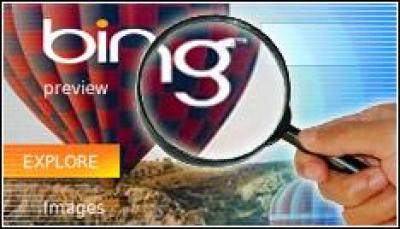Microsoft Adds Street Imagery To Bing Update

Microsoft is updating its search engine and the new Bing Maps application will now include Streetside imagery similar to Google’s Street View
Microsoft is rolling out updates for its Bing search engine which will include an update of Bing Maps that promises eye-level views of streets, as well as a Twitter feed.
The beta version of the updated Bing Maps now features Streetside and Photosynth imagery. Although Streetside works very similarly to Google’s Street View, in that it offers an eye-level perspective on local terrain, Microsoft took pains on the official Bing Blog to imply differences between the two applications.
“Streetside is an excellent example of collaboration with Microsoft Research, Live Labs and the core maps team to build something that isn’t just a bunch of pictures stitched together,” the Bing Team wrote in a 2 December post, “but an actual physical environment on top of which we can provide an experience that connects to information across the web.”
Many of the adjustments to Bing Maps seem to echo a Microsoft mission to pair traditional online cartography with real-time information from the web. Particularly in that spirit is Twitter Maps, which displays Tweets originating from particular geographic locations; for example, typing in “New York” will display the most recent Tweets originating from Bryant Park, a Madison Avenue bar and other locations, marked by a Twitter-branded pin on the Bing Map.
Other “Map Apps” include current traffic, live traffic video feeds from across the United States, local attractions and businesses, a hotel finder, Photosynth, and Signs & Billboards. A feature called Local Lens indexes local blogs from around the country, showing events happening within particular communities.
The Bing Maps beta can be accessed here.
There is also a new Bing for Windows Mobile application with “improved auto-locate and voice search,” downloadable here. The application allows users to speak a search query into their phones and provides streamlined access to maps and driving directions, quick bookmarking of local businesses and locations for later reference, and saved favourites and recent searches.

A new Bing Bar for Internet Explorer and Firefox offers Search Assist (which suggests searches and images whenever you start typing into the search box), Browse Plus (which automatically pulls requested content, such as stocks, from across the web) and No-Fail Cash Detector (which figures out which merchants use Bing’s Cashback feature).
Bing’s Visual Search will also begin integrating Facebook and Twitter feeds, allowing users to “quickly find your status updates of your friends and followers, sort by upcoming birthdays and more.”
This is the second time in two months that Microsoft has updated Bing, which is competing fiercely against Google. Currently, Bing occupies roughly 9.6 percent of the US search engine market, according to a 11 November research note by Experian Hitwise, while Google occupies 70.6 percent of the market.
In November, Microsoft gave Bing a more robust video page – integrating feeds from Hulu, MSN Video and ABC, among others – and search results from Wolfram Alpha, the computational engine that delivers a definitive, and usually numerical, answer in response to search queries. In addition, Bing now delivers localised results for weather and events.
Bing could potentially gain market share in 2010 once Microsoft completes its search and advertising deal with Yahoo, which will see Bing power back-end searches on Yahoo’s pages. If Yahoo’s search engine market share is ported over to Bing with no attrition once Microsoft and Yahoo close that deal, then Bing’s share would rise to 26.7 percent, based on the Experian Hitwise numbers.